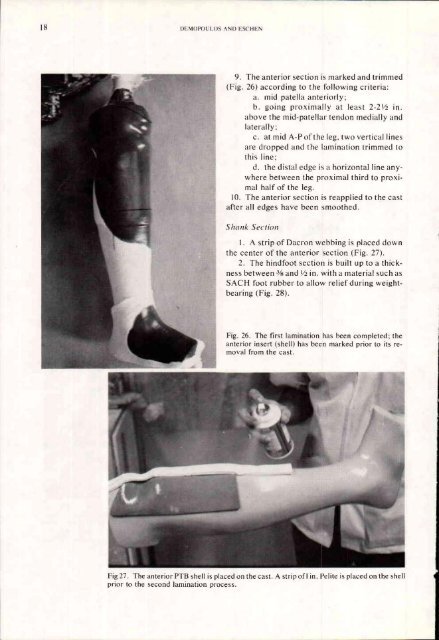Orthotics and Prosthetics
Orthotics and Prosthetics
Orthotics and Prosthetics
Create successful ePaper yourself
Turn your PDF publications into a flip-book with our unique Google optimized e-Paper software.
9. The anterior section is marked <strong>and</strong> trimmed<br />
(Fig. 26) according to the following criteria:<br />
a. mid patella anteriorly;<br />
b. going proximally at least 2-2 1/2 in.<br />
above the mid-patellar tendon medially <strong>and</strong><br />
laterally;<br />
c. at mid A-P of the leg, two vertical lines<br />
are dropped <strong>and</strong> the lamination trimmed to<br />
this line;<br />
d. the distal edge is a horizontal line anywhere<br />
between the proximal third to proximal<br />
half of the leg.<br />
10. The anterior section is reapplied to the cast<br />
after all edges have been smoothed.<br />
Shank<br />
Section<br />
1. A strip of Dacron webbing is placed down<br />
the center of the anterior section (Fig. 27).<br />
2. The hindfoot section is built up to a thickness<br />
between 3/8 <strong>and</strong> 1/2 in. with a material such as<br />
SACH foot rubber to allow relief during weightbearing<br />
(Fig. 28).<br />
Fig. 26. The first lamination has been completed; the<br />
anterior insert (shell) has been marked prior to its removal<br />
from the cast.<br />
Fig 27. The anterior PTB shell is placed on the cast. A strip of 1 in. Pelite is placed on the shell<br />
prior to the second lamination process.
















